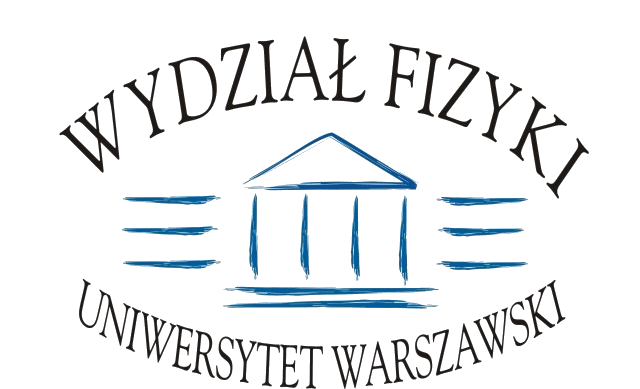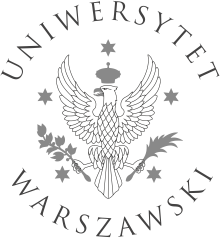Seminarium Kosmologia i Fizyka Cząstek
2006/2007 | 2007/2008 | 2008/2009 | 2009/2010 | 2010/2011 | 2011/2012 | 2012/2013 | 2013/2014 | 2014/2015 | 2015/2016 | 2016/2017
2016-03-22 (Wtorek)
Diego Redigolo (LPTHE, Paris)
Di-Photon Resonance @ 750 GeV. Implication for Naturalness & Dark Matter
After briefly reviewing the model independent phenomenological features of the di-photon excess observed by both ATLAS and CMS we investigate its consequences for model building. Under the hypothesis of having observed a scalar resonance produced in s-channel at 750 GeV, we show how naturalness can be a powerful organizing principle to compare the different classes of models that can fit the di-photon excess. On the other hand we comment on the intriguing possibility to relate the scalar resonance to Dark Matter portals.
2016-03-15 (Wtorek)
Adam Falkowski (Universite Paris-Sud, Orsay, France)
Model-independent constraints on physics beyond the SM
I will discuss the interpretation of collider data in a model-independent framework of effective field theory (EFT) beyond the standard model (SM). This involves extending the SM Lagrangian by a set of higher-dimensional operators. Possible effects of these operators are, e.g., modified couplings of the SM Higgs and gauge bosons or new contact interactions involving four SM fermions. In the talk I will discuss the current constraints on these operators and the future prospects to probe new physics with EFT methods.
2016-03-08 (Wtorek)
Grzegorz Zuzel (UJ)
Present status and future of direct dark matter searches
In the last years several technologies have been developed to experimentally confirm existence of dark matter particles by direct detection of their interactions. Due to the rapid progress in background reduction techniques, developments of calibration strategies and statistical treatment of data, tremendous improvement in detector’s sensitivities has been observed. This review will be focused on the present status of direct dark matter searches with application of different detection technologies. Future plans and predictions for some of the experiments will be discussed as well.
2016-03-01 (Wtorek)
Enrico Sessolo (NCBJ)
Flavored gauge mediation in the Peccei-Quinn NMSSM
2016-01-26 (Wtorek)
Adrian Lewandowski (AEI Potsdam-Golm)
Two-loop beta functions in cutoff regularization and RG improved Veltman conditions
I will present a renormalization scheme based on a smooth cutoff regularization that can be used to study non-supersymmetric renormalizable gauge theories. I will also explain what renormalization group equations in this scheme tell us about the hierarchy problem.
2016-01-19 (Wtorek)
Krzysztof Turzyński (IFT UW)
Between infation and reheating
There is a less studied aspect of cosmological infation - the evolution of the universe afterthe accelerated expansion but before the onset of particle production leading to the radiationdominatedera. In the framework of multi-feld infationary models, I will discuss possible mechanismsof ending accelerated expansion and how the curvature perturbations can evolve thereafter. This talk is partially based on the following references: 1. S. Renaux-Petel, K. Turzyński,On reaching the adiabatic limit in multi-feld infation, JCAP 1506 (2015) arXiv:1405.6195 2. S.Renaux-Petel, K. Turzyński, Geometrical destabilization of heavy scalar felds during infation,arXiv:1510.01281
2016-01-12 (Wtorek)
Romuald Janik (Uniwersytet Jagielloński)
Non-equilibrium dynamics and phase transitions from AdS/CFT
2015-12-22 (Wtorek)
Lesław Rachwał (Fudan University, Shanghai, China)
Exact solutions and spacetime singularities in nonlocal gravity
It is explicitly shown under which conditions flat and Ricci-flat spacetimes as well as maximally symmetric manifolds are exact solutions of the equation of motion (EOM). We find that well-known physical spacetimes like Schwarzschild, Kerr, (Anti-) de Sitter serve as solutions for standard matter content, when the EOM does not contain Riemann tensor alone. In dimension higher than four we can also have Anti-de Sitter solutions in the presence of positive cosmological constant. I will pedagogically show how to obtain these exact solutions. Furthermore, for another version of theories from this class, with terms written in the Weyl basis, Friedmann-Robertson-Walker (FRW) spacetimes are also exact solutions (exactly in the same way like in Einstein theory), when the matter content is given by conformal matter (radiation). I will also comment on rather inevitable presence and universality of singularities and possible resolution of them in finite and conformally invariant theories. ``Delocalization" is proposed as a way to solve the black hole singularity problem. In order to solve the problem of cosmological singularities it seems crucial to have a conformally invariant or asymptotically free quantum gravitational theory.
2015-12-15 (Wtorek)
Karol Kołodziej (University of Silesia, Katowice)
Probing the top-Higgs coupling through the secondary lepton distributions in the associated production of the top-quark pair and Higgs boson at the LHC
Determination of the coupling of the recently discovered Higgs boson to thetop quark currently belongs to one of the most challenging tasks of the highenergy experimental physics. The anomalous ttH coupling affects the secondary lepton distributions in the process of associated production of the top quark pair and Higgs boson in the proton-proton collisions at the LHC. I will show that, although the gluon fusion mechanism dominates the ttH production in proton-proton collisions at s^(1/2) = 14 TeV, the contribution of quark-antiquark hard scattering processes is quite substantial and, therefore, should be taken into account in the analyses of data. I will also explain why the effects of the scalar and pseudoscalar anomalous couplings in the unpolarized cross section of the process arealmost completely insensitive to the sign of either of them.
2015-12-08 (Wtorek)
John Ellis (King's College, London & CERN, Geneva)
Higgs & Supersymmetry at the LHC & Beyond
Stron 2 z 3






